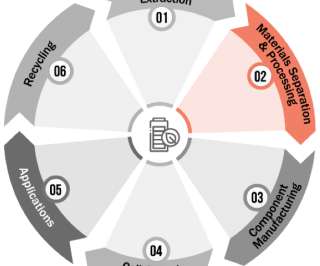New Na-ion battery combining intercalation and conversion could be promising low-cost energy storage system
Green Car Congress
FEBRUARY 19, 2014
Scheme of the new full sodium-ion battery, which combines an intercalation cathode and a conversion anode. This battery system combines an intercalation cathode and a conversion anode, resulting in high capacity, high rate capability, thermal stability, and much improved cycle life. (In Credit: ACS, Oh et al. Click to enlarge.

































Let's personalize your content